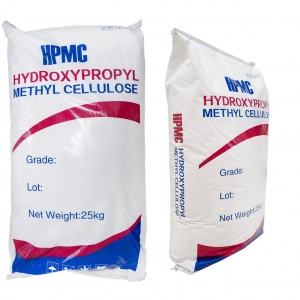Cellulose Ethers
Cellulose ethers represent a versatile class of compounds derived from cellulose, a natural polysaccharide abundantly found in the cell walls of plants. These polymers undergo etherification, a chemical modification process, to impart specific properties that make them valuable in a myriad of industrial applications. The diverse range of cellulose ethers includes methyl cellulose (MC), hydroxyethyl cellulose (HEC), hydroxypropyl methyl cellulose (HPMC), carboxymethyl cellulose (CMC), ethyl cellulose (EC), and sodium carboxymethyl cellulose (NaCMC or SCMC). Each type possesses unique characteristics, rendering them suitable for various uses across industries such as food, pharmaceuticals, construction, and cosmetics.
1. Introduction to Cellulose Ethers:
Cellulose, a complex carbohydrate, serves as the primary structural component in plant cell walls. Cellulose ethers are derived by chemically modifying cellulose through etherification, where ether groups are introduced to the cellulose backbone. This modification imparts water solubility, biodegradability, and film-forming properties to the resulting cellulose ethers.

2. Methyl Cellulose (MC):
- Properties: MC forms transparent and flexible films upon drying.
- Applications: MC is extensively used as a thickener, stabilizer, and emulsifier in the food industry. Its applications extend to pharmaceuticals, construction materials, and tablet coatings.
3. Hydroxyethyl Cellulose (HEC):
- Properties: HEC exhibits excellent water retention, thickening, and film-forming capabilities.
- Applications: Common uses include latex paints, adhesives, personal care products (shampoos, lotions), and as a thickening agent in industrial processes.
4. Hydroxypropyl Methyl Cellulose (HPMC):
- Properties: HPMC combines features of MC and hydroxypropyl cellulose, offering enhanced water retention and improved adhesion.
- Applications: HPMC is employed in construction materials, pharmaceuticals, food products, and as a thickening agent in various industrial processes.
5. Carboxymethyl Cellulose (CMC):
- Properties: CMC is highly water-soluble and can form gels.
- Applications: CMC finds widespread use as a thickening and stabilizing agent in the food industry, pharmaceuticals, cosmetics, textiles, and oil drilling fluids.
6. Ethyl Cellulose (EC):
- Properties: Insoluble in water but soluble in organic solvents.
- Applications: Mainly employed in the pharmaceutical industry for controlled drug release, as well as in tablet and granule coatings.
7. Sodium Carboxymethyl Cellulose (NaCMC or SCMC):
- Properties: NaCMC is water-soluble with thickening and stabilizing properties.
- Applications: Used in the food industry as a thickener and stabilizer, and in various industrial applications such as textiles, paper production, and pharmaceuticals.
8. Industrial Applications:
- Construction Industry: Cellulose ethers enhance the properties of construction materials, including adhesives, mortars, and grouts.
- Pharmaceuticals: They play a crucial role in drug delivery systems, tablet coatings, and controlled release formulations.
- Food Industry: Cellulose ethers function as thickeners, stabilizers, and emulsifiers in a wide range of food products.
- Cosmetics and Personal Care: Commonly used in the formulation of shampoos, lotions, and other personal care products.
- Textiles: CMC is utilized in the textile industry for sizing and finishing processes.
- Oil Drilling: CMC is added to drilling fluids to control viscosity and filtration.
9. Challenges and Future Developments:
- Environmental Impact: Despite biodegradability, the production process and potential additives may have environmental implications.
- Research Trends: Ongoing research focuses on improving the sustainability of cellulose ether production and expanding their applications.
10. Conclusion:
Cellulose ethers represent a vital class of polymers with diverse applications across industries. Their unique properties make them indispensable in enhancing the performance and functionality of various products. Ongoing research and development aim to address environmental concerns and unlock new possibilities for these versatile compounds in the future.
Post time: Dec-31-2023
